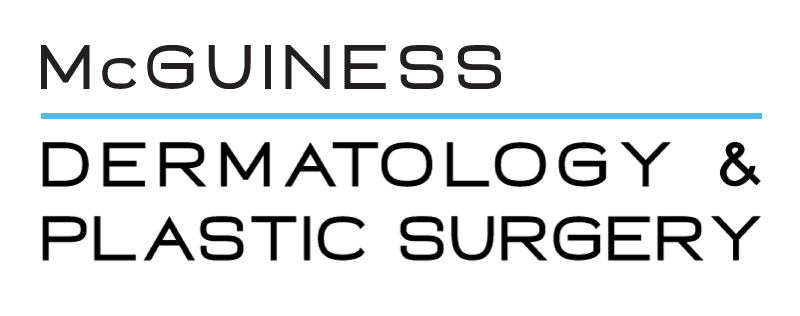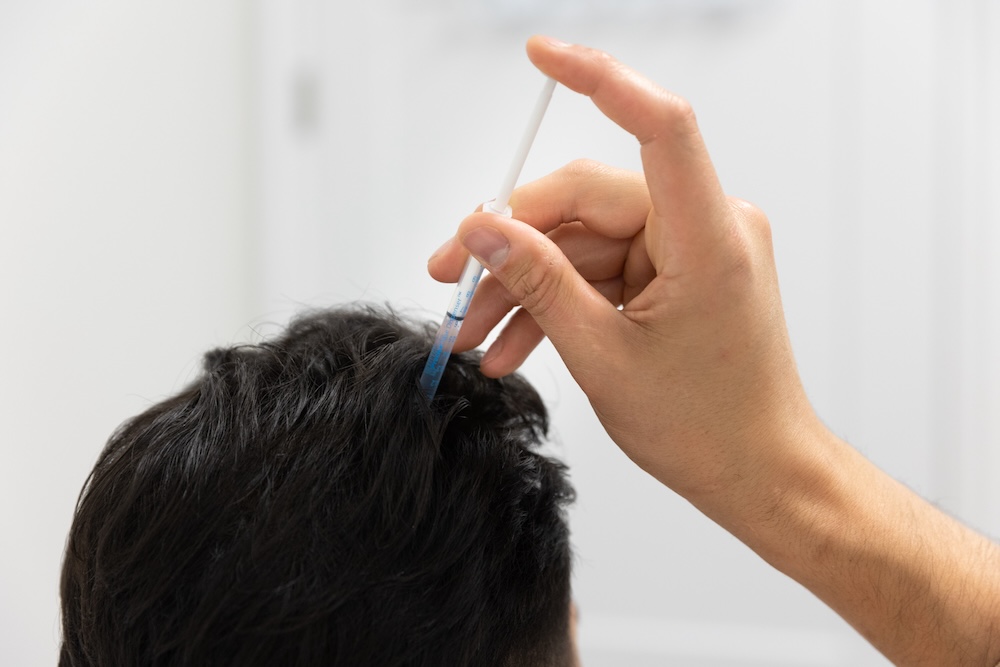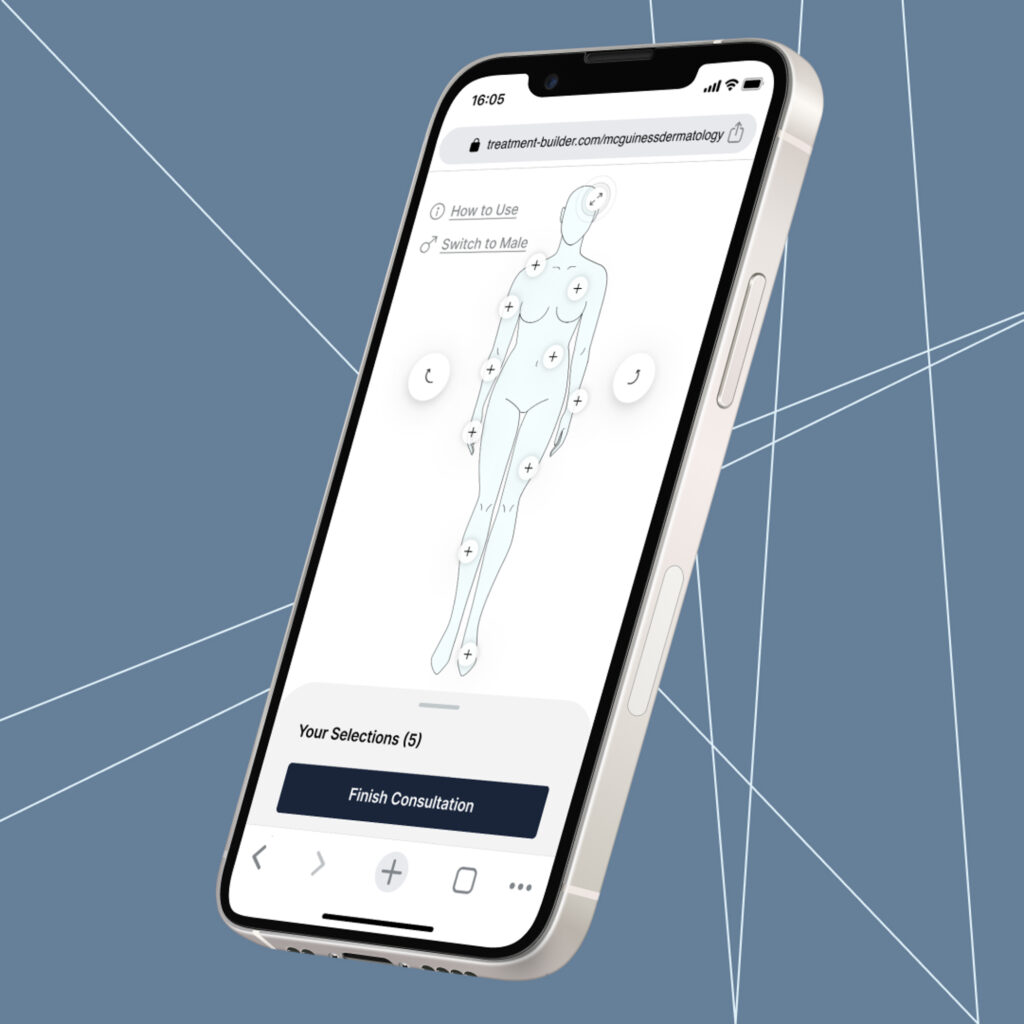
Many people associate their hair with identity, confidence, and self-expression. In dermatology, we see it as a reflection of your overall health and wellbeing.
When issues with your hair and scalp arise—like hair thinning or shedding—it can indicate an underlying medical issue. That’s why your first course of action should be to visit one of our McGuiness Dermatology & Plastic Surgery locations to see a board-certified hair dermatologist in Plano, Prosper, Flower Mound, Frisco, and Richardson.
Our team determines the root cause of your hair loss before building a targeted, comprehensivehair restoration treatment plan for you.
Seeing a dermatologist not only helps you feel more confident in yourself, but it can support long-term wellness. Find out more about our combined approach to hair restoration.
Why You Should See a Dermatologist for Hair and Scalp Issues
When you notice gradual thinning, a receding hairline, or clumps of hair falling out, your first thought might be to visit your hairdresser—after all, they specialize in hair and hair products, don’t they?
While a hairdresser makes your hair look good and can even improve the health of your scalp, they can’t diagnose the cause of hair and scalp issues. A dermatologist is a medical doctor who specializes in the health of your skin, hair, and nails and can properly treat your hair loss or scalp issues based on the underlying causes.
At McGuiness Dermatology, you’ll always be seen by a board-certified hair dermatologist in Plano or at any of our other locations. Every dermatologist on our team is extensively trained to diagnose and correctly treat more than 3,000 conditions and diseases of the hair, skin, and nails, along with any cosmetic concerns. This training includes, but is not limited to:
- A bachelor’s degree
- Four years of medical school
- A year-long internship in medicine
- Completing 12,000 to 16,000 hours of treating patients alongside experienced doctors during a three-year long residency.
After training, a board-certified dermatologist must then pass a comprehensive board exam from one of the following organizations:
- American Board of Dermatology
- American Osteopathic Board of Dermatology
- Royal College of Physicians and Surgeons of Canada
Our team knows that your hair reflects your overall health, including your mental health. When you experience hair loss, it can negatively impact how you see yourself. That’s why we offer such a comprehensive approach to hair loss treatments.
What Causes Hair Loss?
Let’s get one thing straight: men and women experience hair loss. Thinning hair, hair shedding, and receding hairlines or bald spots bring patients of all ages and genders into our office to receive guidance from a hair dermatologist in Plano. Many factors cause hair loss, including:
- Genetics
- Hormones
- Autoimmune disorders
- Stressors or bodily changes
Let’s take a closer look at why may be experiencing hair loss.
Genetics
You may have heard the expression “look to your mother’s father” if you want to predict if you’ll be bald. While your maternal grandfather’s genes may play a role in your hair loss, they definitely aren’t the only ones to blame.
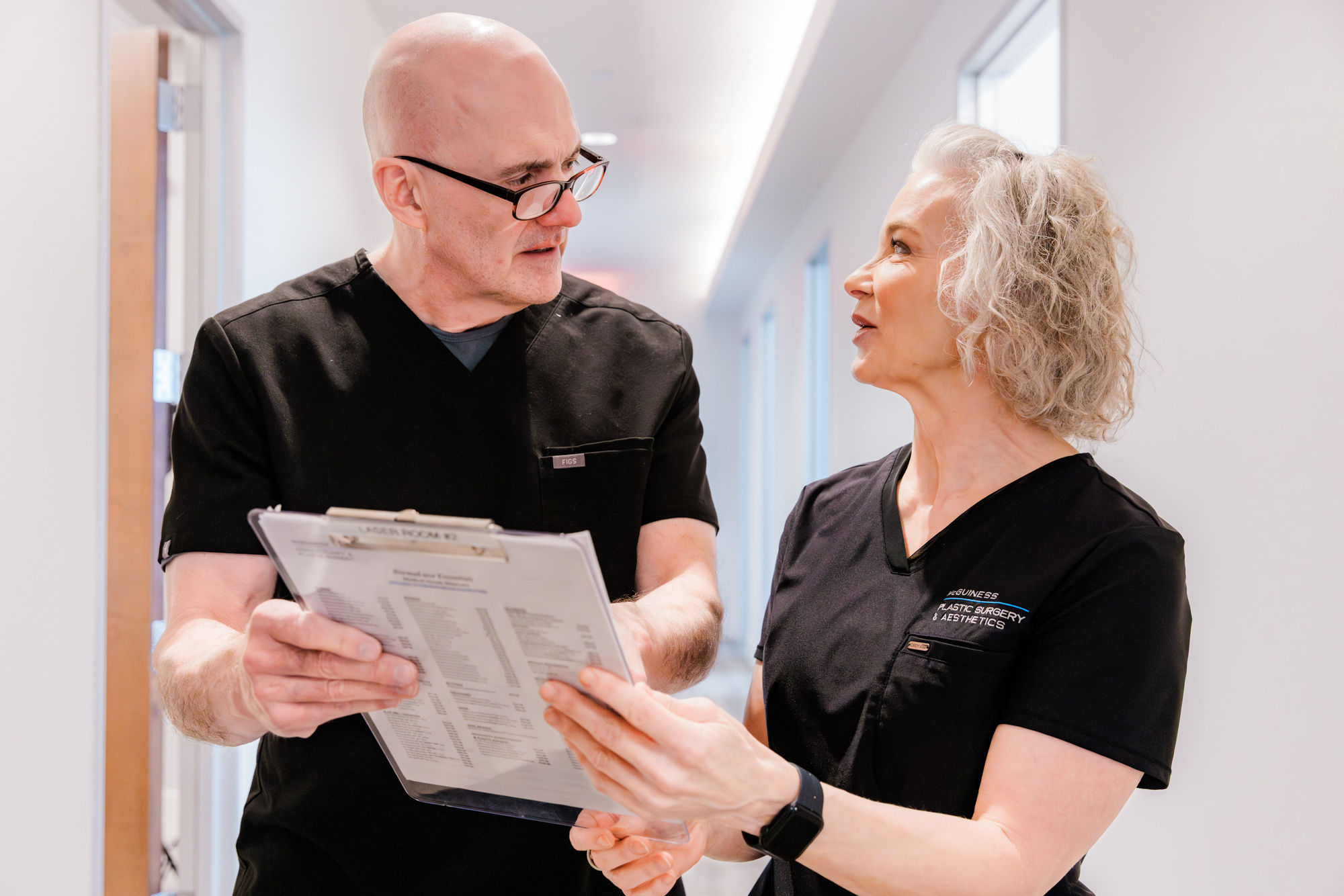
Hair loss is a polygenic trait, meaning that it’s inherited through two or more genes from either side of your family. If genetics are the cause of your hair loss, it manifests in a specific thinning pattern as the hair follicles begin to shrink.
For men, this symmetrical loss happens along the hairline (receding hairline) or at the crown of the head. For women, the thinning occurs at the crown of the head and diffuses across the scalp but keeps the hairline intact rather than receding.
Hair loss due to genetics follows the same pattern as hair loss due to hormonal changes.
Hormonal Changes
We often associate hair loss with men because they typically start experiencing it at a younger age than women. Women start experiencing hair loss as their bodies enter into menopause around age 40 or 50.
In Men
It all comes down to hormones. Androgen hormones like dihydrotestosterone (DHT) play a role in the development of male characteristics and sexual anatomy. If these hormone levels are too high or too low, they can inhibit hair growth on the scalp. Our hair dermatologist in Plano recognizes this as androgenic alopecia, or male pattern baldness and female pattern hair loss.
In Women
Women of all ages can experience this type of hormonal-induced hair loss. However, it’s most common among menopausal women because their levels of estrogen drop, allowing for androgens to rise. Hair loss can also happen to younger women with PCOS (polycystic ovary syndrome). PCOS affects more than your hair; it can also cause acne, skin tags, and darker patches of skin known as acanthosis nigricans.
Autoimmune Diseases
Alopecia areata is one of many autoimmune diseases that can cause hair loss. This one in particular causes patchy hair loss on your scalp or body. Alopecia areata happens when your immune system attacks your hair follicles, thinking they are germs, viruses, or parasites.
Stress or Bodily Changes
The average person loses 50 to 100 strands of hair a day because hair is constantly in a cycle of growth, rest, shed, and regrow. Bodily changes, like pregnancy and weight gain, or stressors like infections or childbirth, can cause hair to prematurely enter the shedding phase. This can lead to the loss of up to 300 strands a day.
This condition is known as telogen effluvium and it typically lasts less than 6 months and resolves on itself. However, we recommend you visit a hair dermatologist in Plano. Our team can help you identify stressors, as they can be caused by medications, nutritional deficiencies, having an overactive or underactive thyroid, and much more.
Scalp Issues
Some patients may experience itchiness, dryness, flakiness, or inflammation of the scalp that may or may not lead to hair loss. These include:
Consulting a board-certified hair dermatologist for scalp problems ensures access to top-notch treatments and products that enhance, not worsen, your condition.
The Process at McGuiness Dermatology
It’s best to see a member of our team as soon as possible when noticing hair thinning or shedding. Early intervention with scalp care and nonsurgical hair restoration treatment maximizes your chances of halting and reversing hair loss. Here’s what you can expect when you come to McGuiness.
Consultation: Determining the Cause
During your consultation, we begin by examining your scalp, reviewing your medical history, and discussing life changes to identify the underlying cause of your hair loss. For some patients, we may order bloodwork to diagnose nutritional deficiencies, hormonal changes, or autoimmune conditions.
All of these steps help your hair dermatologist in Plano create a personalized treatment plan designed to restore and maintain healthy hair growth.
Personalized Treatment Plans
Our practice offers a wide range of treatments depending on your unique needs. In some cases, we combine these different approaches for the best long-term results
Prescription and Over-the-Counter-Medications
If we determine that the cause of your hair loss is androgenic alopecia (female or male pattern baldness), we have medications that slow and stop hair loss. These include oral medications that you take daily, or topical treatments that you apply to your scalp once or twice daily. These medications and prescriptions slow the rate of your hair loss and even stimulate new hair growth.

It’s important to be patient with these products, as it can take at least 6 to prevent further hair loss, and a few more to see the results in the density and thickness of your hair. In the meantime, you can benefit from other targeted approaches offered by your hair dermatologist in Plano, like our procedural therapies.
Procedural Therapies
We offer treatments that pair well with your medications to stimulate hair growth. Many people benefit from PRP injections and Keralase, a low-level light therapy.
PRP stands for platelet-rich plasma, a growth factor-based treatment for hair loss that promotes growth, healing, and rejuvenation. At McGuiness, we start by drawing your blood from your arm, and then spinning it in a centrifuge. This separates the platelets from your red and white blood cells, creating a protein-rich plasma. Next, we inject this concentrate into your scalp to stimulate and awaken dormant hair follicles and produce thicker, healthier hair.
Our low-light laser, Keralase, combines laser technology with a specialized serum to improve blood circulation on your scalp and stimulate the growth of thicker, stronger hair. We use the laser to make tiny channels in spots along your scalp that show hair loss or thinning. Then, we apply a special serum full of growth factors to the treatment area where it’s absorbed through the microchannels. Gradually, you’ll notice less scalp visibility as you continue your treatments.
Nutritional & Lifestyle Support
Your hair is an indication of your overall health. Specific vitamins and minerals are key to new hair growth and fortify your immune system. Our team may recommend supplements or specific foods to include in your diet, especially those that contain vitamin D, vitamin C, and iron.
Along with supporting your internal health, we also offer topical products and individualized advice to optimize your scalp health. Depending on your symptoms, we can supply products that reduce inflammation, hydrate your skin, and calm itchiness. By taking this full-body, combinable approach to hair restoration, we help improve your overall health and quality of life.
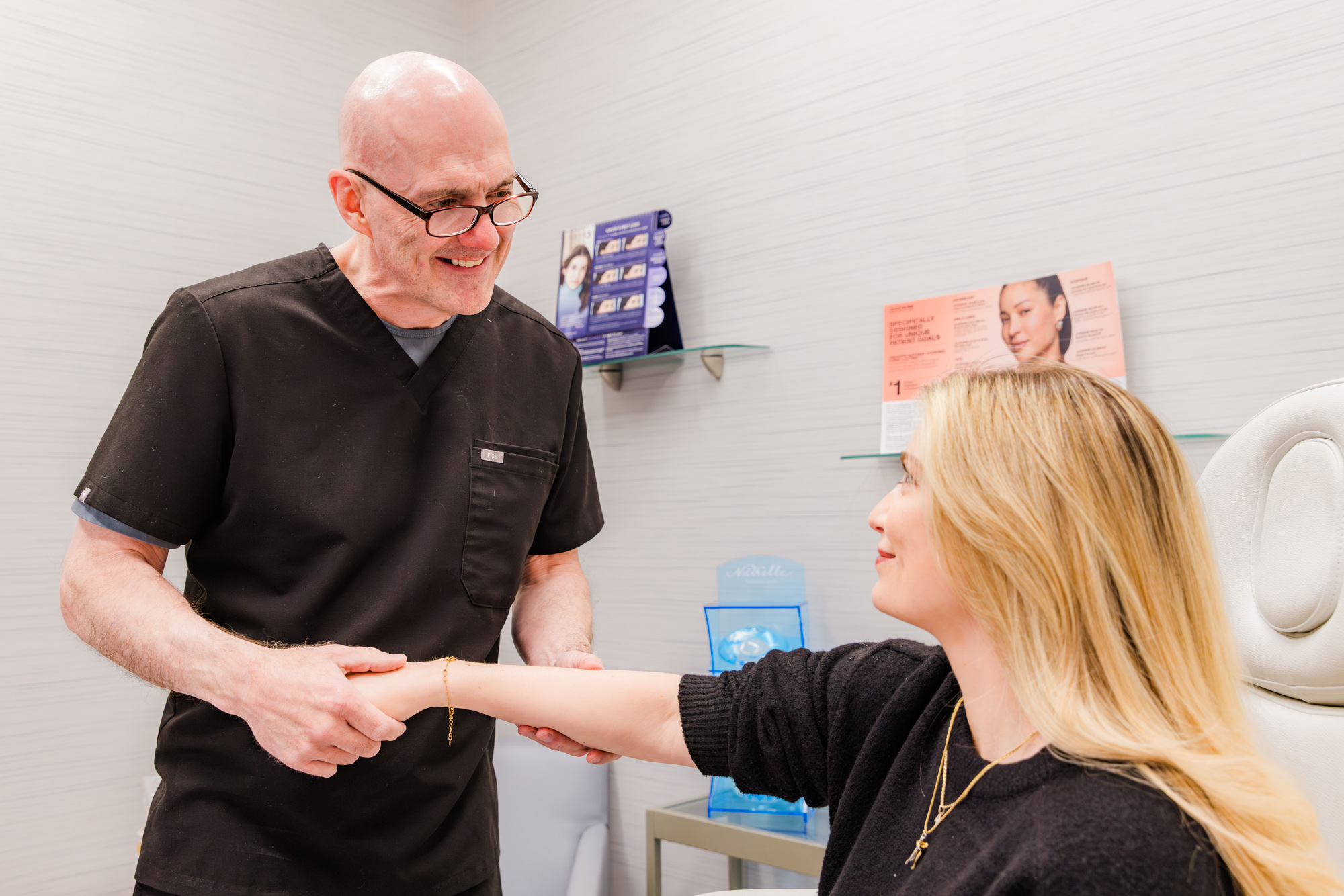
Save Your Hair and Optimize Your Health
Hair is a form of identity and self-expression, and at McGuiness Dermatology, we don’t want to let anything take that part of yourself away from you. By understanding that hair loss is multifaceted, we take our time to determine the causes(s) and create a targeted approach to stopping or reversing it.
You can see a hair dermatologist in Plano, Prosper, Murphy, Frisco, Flower Mound, and Richardson. The sooner you visit our dermatology center, the quicker you can see results.
To streamline the process, you can also try our online treatment planning tool. Once we receive your submission, a member of our team will reach out with potential treatment options and available appointment times.
